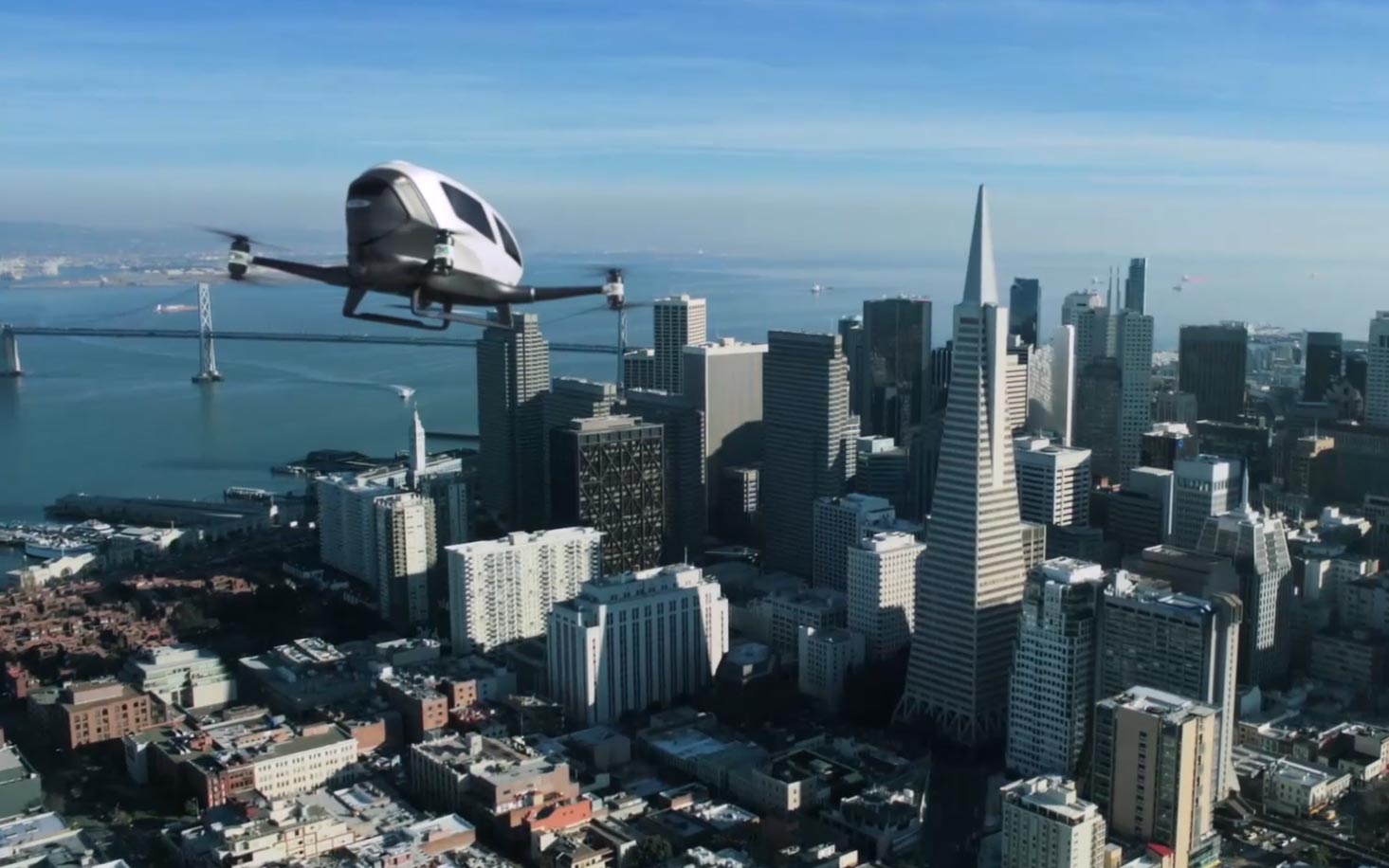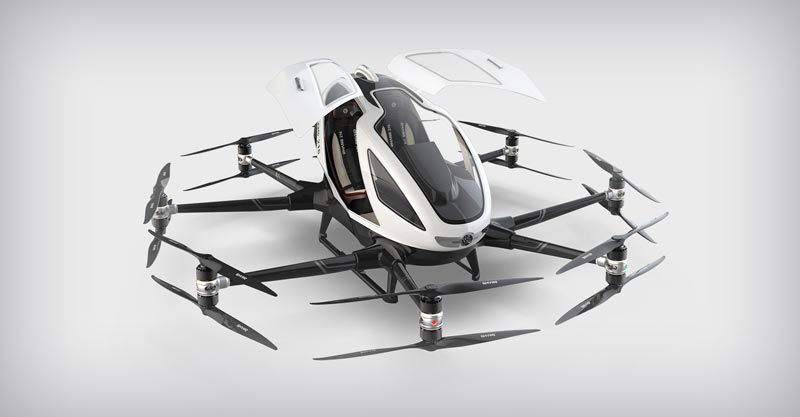
EHang, a creator of autonomous aerial vehicles (AAVs), has announced a partnership with telecoms giant Vodafone to build an urban air mobility ecosystem that will lay the foundations for drone taxis to be become key part of urban transport.
EHang has developed electric AAVs that can autonomously fly to a pre-selected destination using a single-click interface, or tour a route via pre-set waypoints. This comes with a host of safety features to ensure that each AAV operates safely and cannot take off if conditions are dangerous.

Access deeper industry intelligence
Experience unmatched clarity with a single platform that combines unique data, AI, and human expertise.
In order to achieve this, the AAVs communicate with a nearby command-and control centre, requiring a reliable and quick network connection.
The strategic partnership will see EHang AAVs equipped with Vodafone SIM cards to provide this connection, using the company’s recently launched 5G networks.
5G: The value of the EHang-Vodafone partnership
This partnership with Vodafone is critical to the successful operation of EHang AAVs because 5G provides the network speeds and latency required to ensure that multiple AAVs can operate safely within an urban environment.
“Every AAV requires digital connectivity to ensure the coordination of air traffic, so fast networks like 5G are critical to enabling sustainable pilotless air travel and freight delivery systems,” explained Hu Huazhi, founder, CEO and chairman of EHang.

US Tariffs are shifting - will you react or anticipate?
Don’t let policy changes catch you off guard. Stay proactive with real-time data and expert analysis.
By GlobalData“5G is also a key infrastructure component for the commercial deployment of AAVs, since it enables take-offs and landings that are precisely controlled within centimeters.”
 The rise of urban air mobility
The rise of urban air mobility
The partnership will see EHang and Vodafone develop the 5G-based ecosystem to enable AAVs to operate in cities, with initial efforts focusing on Germany before expanding to the rest of Europe.
It is part of a wide move towards developing urban air mobility systems, with networks of AAVs, or drone taxis, set to become an increasing presence within urban environments.
Although proposed many times over the years, AAVs are coming of age now because of the maturation of a host of different technologies that make them possible. These include the autonomous control systems to operate them; the batteries that keep them in the air and the 5G network infrastructure.
However, the market conditions also provide significant potential demand, with city populations growing rapidly and so providing greater need for more diverse urban transport solutions.
“Autonomous air taxis will enable increased mobility options for all of us in the future,” said Hannes Ametsreite, CEO of Vodafone.
“They will complement existing modes of transportation but allow us to fly above traffic jams if needed.”
Read more: Flying cars of the future: Why they won’t be cars at all







